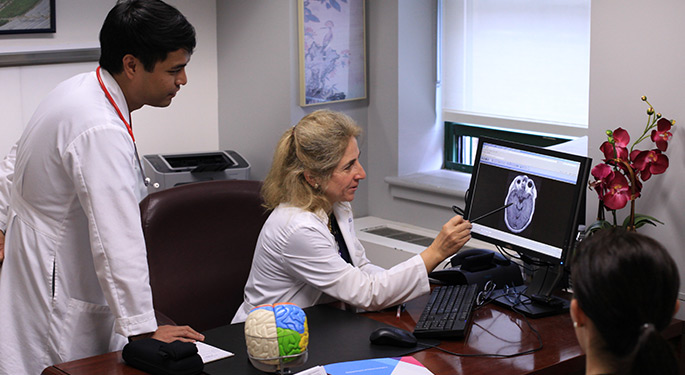Low-Grade Gliomas

Low-grade gliomas are cancerous brain tumors that arise from the support cells (glial cells) within the brain. They are similar to glioblastomas, but are slow growing, and only make up 20 percent of all primary brain tumors.
Mount Sinai’s Comprehensive Brain Tumor Program has a wealth of resources for patients with low-grade gliomas, from innovative technology to improve surgical precision to a team of neuro-oncologists, neurologists, and skilled neurosurgeons to provide comprehensive care.
The goal of care is to provide patients with treatment options that work best for them with a strong emphasis on improving quality of life,
Low-grade gliomas are not very aggressive, but they cause a range of symptoms, many similar to faster-growing gliomas. Symptoms include blurry vision, headaches, memory loss, nausea and vomiting, numbness, sensory loss, and weakness on one side of the body. We think these symptoms may be more subtle than with other types of brain tumors because low-grade gliomas grow slowly.
These tumors tend to cause more seizures than other brain tumors because they are located closer to the surface of the brain, which is responsible for seizure activity.
Treatment Available
A low-grade glioma that is slow to grow usually does not need radiation or chemotherapy immediately. We often treat them through monitoring, surgery, radiosurgery, chemotherapy, or a combination. Generally, we find a low-grade glioma when we are looking for something else. We can monitor it with magnetic resonance imaging and control it using anticonvulsant medications.
If we determine that surgery is appropriate, we may use intraoperative brain mapping to identify vital areas of the brain and avoid them during tumor removal surgery. Brain mapping allows us to see exactly what parts of your brain control what functions; this varies from person to person.
In addition, we can identify certain tumor markers (such as isocitrate dehydrogenase by analyzing tissue removed during a biopsy. This helps us determine whether your low-grade glioma is likely to be well-behaved over time.
Radiation and chemotherapy are options, but we prefer to hold off until we need to pursue those therapies. Our goal is to preserve the quality of life for patients as long as we are able.